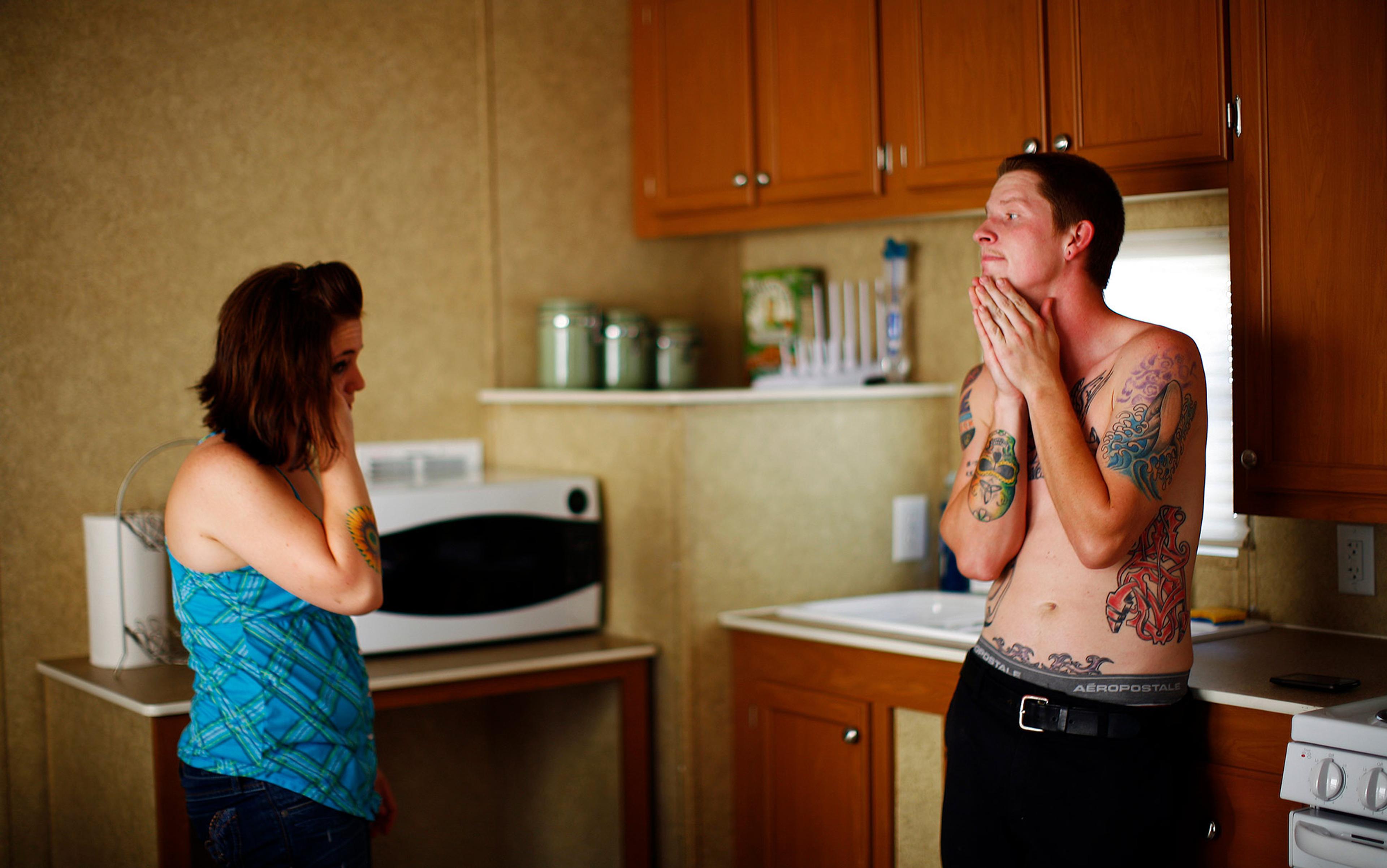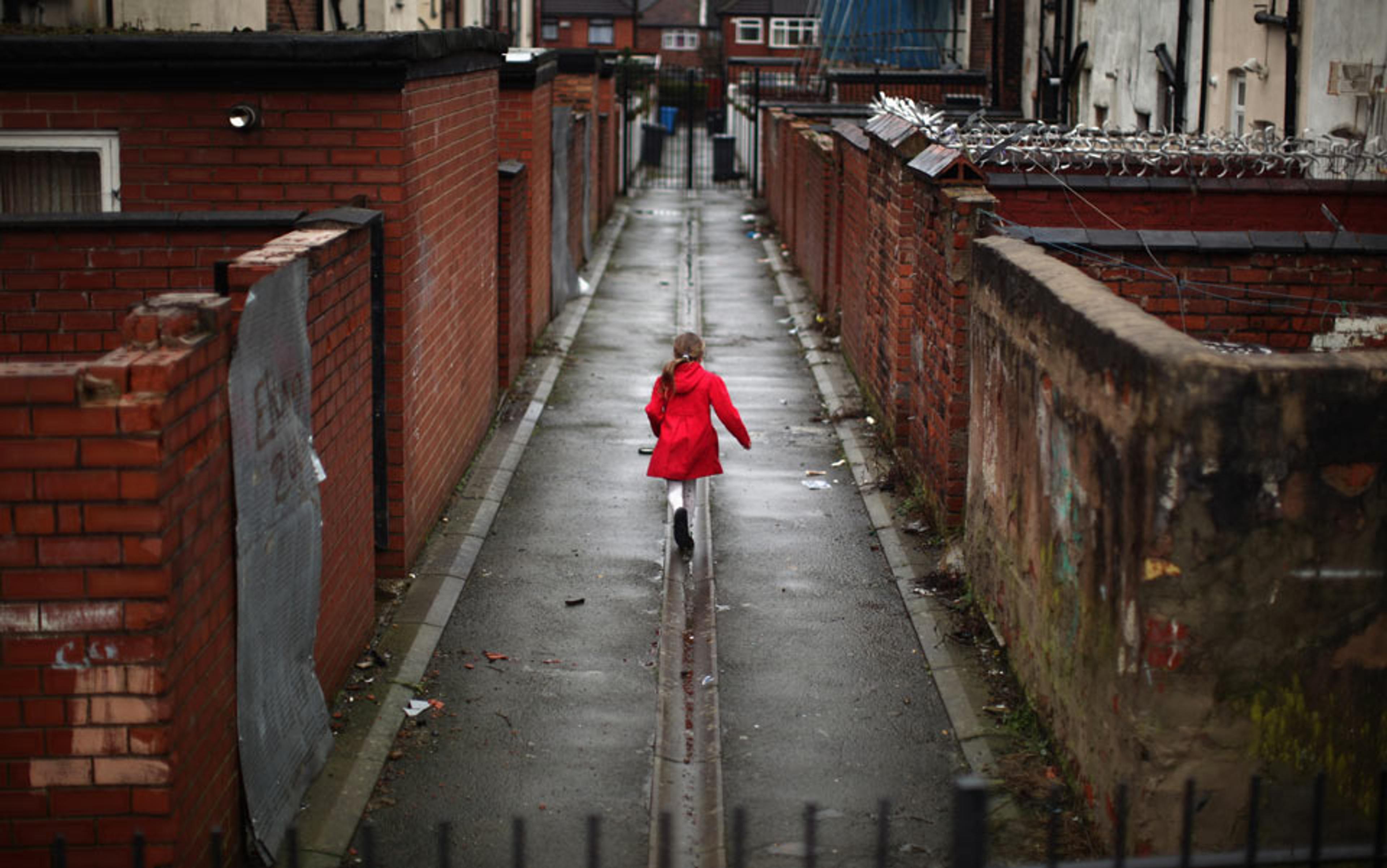Most people have a view on the sexual revolution of the 1960s but, to borrow an adage about the impact of the French Revolution, its consequences continue to unfold. In his book Between Sex and Power (2004), on the family in the 20th century, the sociologist Göran Therborn says the sexual revolution brought entirely new conceptions of romantic love and marriage. We can see its changes in how intimacy and romance now emphasise maximising pleasure. People today often seek out partners to satisfy our deeper emotional needs first and foremost. In her book The End of Love (2019), the sociologist Eva Illouz defines this new type of intimacy as one in which people look for partners who will ‘alleviate anxiety, increase their (emotional) performance, and make investments in uncertain futures.’
The reality is that the ludic demands of the sexual revolution have been realised, but on terms dictated by the market, not by the libertines who pushed for communal living, abolition of the family and more liberated sexual expression. Marriage and family remain highly popular. In a 2019 survey, more than 84 per cent of LGBT people hold that love is a ‘very important’ reason to get married (versus just 46 per cent of the same cohort who said the legal benefits of marriage are very important). The most common reasons cited for divorce now tend to be ‘emotional’ considerations, and in a study of a large, statistically representative sample of young women in the United States, both single and married, more than 80 per cent stated that they value a husband’s capacity to express his feelings over his capacity to provide as the most valuable trait of a would-be partner.
For men, this change in the norms of intimacy tends to mean that marriage and the possibility of starting a family is no longer about realising values of masculinity through providing for a woman and children. Rather, a new intimacy has fused with market terms so that a contractual logic centred on protecting one’s self-worth, self-esteem and dignity governs modern marriage. Illouz points out that romantic relations for couples in the US and Europe, whether they be in heterosexual, homosexual or non-normative relationships, are all set on the goal of securing each subject’s self-worth.
At first blush, these new norms of intimacy and marriage seem to indicate a more egalitarian structure for marriage and family norms. They seem to point to an environment that has moved beyond and overcome some forms of gender hierarchy and masculinist power dynamics that socialist-feminist scholars have long criticised in the patriarchal, middle-class family.
The new intimacy based on self-worth is egalitarian seeming but its promises are not widely experienced. Since the late 1970s and accelerating up to the present, the prospects of marriage and family have receded for many people, especially for the working class. Marriage now follows a pattern known as ‘assortative’, which means that people tend, at a greater rate, to marry partners from a similar class background. We can see the problem of the new intimacy of self-worth another way too: concurrent with the rise of assortative marriage, national data for the US points to a ‘divorce divide’ between classes. Since the 1970s, divorce has increased among the working class while at the same time it has significantly decreased among highly educated men and women. Marriage requires that couples pool their incomes, that both partners work full-time, and that they invest heavily in their children’s development. These economic demands weigh heavily on couples with lower education and on working-class families, and prevent the prospect of starting a family or making a family work in the long run. The benefits of marriage – from sharing income and accruing assets, to the sense of dignity and purpose that family and children bring – are growing more distant for working-class Americans.
To understand these changes a little better, it is helpful to look at macro-social policies in the US over the past 40 years. ‘Neoliberalism’ is a term that can help us understand these new class divides and conflicts. Neoliberalism is a political movement that gained traction in the late 1970s, one that elevates the market as the primary vector of self-making and self-discipline. Following the global recession of 2008, the neoliberal order entered a new stage of rule, which the historian William Davies describes in the following way:
[T]he ‘enemies’ targeted now are largely disempowered and internal to the neoliberal system itself. In some instances, such as those crippled by poverty, debt and collapsing social-safety nets, they have already been largely destroyed as an autonomous political force. Yet somehow this increases the urge to punish them further.
The working class is made into an enemy by the very design of the system.
Neoliberalism also means the return of an older form of class rule that penalises citizens – especially the working class – by emphasising personal responsibility, typically backed up by the interests of private finance, across social life. The economist Thomas Piketty has shown that neoliberal policies have been driven by what he calls the effects of wealth over the effects of income. This means that a family’s accrued wealth is a greater determinant of how class distinctions are seen to operate than is gauging inequality by income.
College in the US offers an example of how this inequality by wealth shapes access to higher education and often determines the college experience for young people. Today, just under half of Americans hold some sort of college degree, but those who pursue college do so with profound risk over the prospect of having to shoulder long-term debt. For those who enter college with financial support from parents, it comes not from the parents’ incomes but more by family inheritance.
While neoliberal policies have fused with some libertine ideals of the sexual revolution to create a new intimacy-centred conception of romance, they’ve also led to new forms of institutional paternalism. In the early days of 1960s campus radicalism, student activists protested the introduction of in loco parentis laws on campuses. Students opposed these strict moral enforcement protocols that sought to exert a conservative paternal authority on youth who were eager to escape the moral structures of their families. As the scholar Melinda Cooper has pointed out, the student protests of the late 1960s came at a time when general public funding to colleges and universities filled young people with a sense of independence and a positive degree of entitlement.
By the dawn of the neoliberal policies of the Ronald Reagan era from the late 1970s onwards, we find in loco parentis laws making a return to campuses. This time, however, that comes with a private finance and student loan system designed to punish poor and working-class youth. This new formation of in loco parentis has not provoked protest, as it did in the 1960s; rather, it has helped shape a distinctive campus political culture in which tort law, personal grievance and private injury are more and more the approach to issues of social justice. This indicates a new type of social paternalism, one that is more insidious than the sort encountered on campuses during the mid-20th century. Its subject struggles to address the root of authority within institutions and instead individualises revolt and injustice. The paternalism that students encountered at the dawn of what would become the sexual revolution in the 1950s was able to be worked through and contested, whereas today’s paternalism is more difficult to transcend.
Therapy culture is part and parcel of the turn to self-worth in the new norms of intimacy
Today, students have been reduced to precarious subjects of ‘human capital’ where legal protections are deployed for mitigating self-injury. The new paternalism has become more difficult to address at the root and, out of this deadlock, a new political language has emerged on campus where individual appeals to a ‘safe space’ for processing difficult material and to ‘cancel culture’ proliferate. The new paternalism fosters a sense of individual grievance as a means of self-protection, and this has shut down the sort of solidarity that made revolts against in loco parentis laws possible on campuses in the 1960s. The new paternalism has created collective feelings of powerlessness in the face of deeper structures that seem unalterable.
Punitive neoliberal social policies affect a particular sense of self that is manifest in changes in college life, and these changes are also, not surprisingly, evident in the new norms of marriage and family. In her study of working-class American Millennials (young adults aged 24-34 at the time), Jennifer Silva found that marriage no longer represents a stable and clear marker of adulthood. For the working class, marriage and family have grown more unstable. Indeed, the prospect of starting a family is perceived as too risky. In addition, the working-class young people of multiracial and multiethnic background that Silva interviews in her book Coming Up Short: Working-Class Adulthood in a Time of Uncertainty (2013) express a longing for more traditional gender roles and family obligations. Silva’s study shows exactly the dynamics whereby a new type of class conflict is emerging on the terrain of the ideals of marriage and family.
However, the biggest force exerting directional change on the marriages of the well-to-do and the working class is not ideas about gender but simple material realities. Having to depend on another person and share legal and financial responsibilities has simply become too risky for working-class people. Of the young people Silva spoke to in her study, only a handful had decided to marry. To compensate for the greater challenges and impediments to marriage, working-class Americans are embracing therapeutic culture to prepare for relationships where strong emotional resilience is called for. Therapy culture is part and parcel of the turn to self-worth in the new norms of intimacy. It calls on individuals to cultivate deeper emotional maturity through self-help literature and constant self-improvement regimens.
Silva shows how therapy culture has become a vital tool for the working class to manage the exclusions they are facing from the promise of starting a family. Silva’s research shows this is a trend that points to a slightly different dynamic than the historian Christopher Lasch documented in the 1970s, when he suggested that the therapeutic turn in culture has primarily fomented a narcissism epidemic. The therapeutic turn is a double-edged sword: it is a requirement to be on the dating market and yet, for working-class people who are deprived of marriage and family due to economic realities, therapeutic outlets help cultivate a greater level of self-worth as they face exclusions from the supposed promises of marriage. One of the effects of the turn to the therapeutic is found in the way that working-class people tend to seek out relationships that are ‘pure’ and can nurture their deepest selves and meet their personal needs. The therapeutic has become a replacement for realising the ideals of self-worth that marriage and family used to offer.
The experience of the working class in the therapeutic setting, ie, on the psychoanalytic couch, is not very likely to address the class dynamics behind their psychic woes, however. In her book Class and Psychoanalysis (2017), the psychoanalyst Joanna Ryan paints a picture of how multiracial and multiethnic working-class patients in therapeutic settings express deep and harmful psychic effects borne from poverty and other class-based social forces. Ryan’s study documents numerous cases that show how the experience of class for these people represents what she names an ‘unprocessable harm’.
Because there is no largescale cultural or social recognition for the experience of class in the US, working-class people struggle to account for the psychic turmoil they face in their lives. The dire situation has recently led Barbara Jensen, one of the founders of the field of Working-Class Studies, to write that, ‘with working-class life decaying so profoundly’, we need to ‘find ways to publicise the dramatic and community-wide psychological consequences of the so-called “gig” economy.’
In popular ideology, the idea of the family in the US has now become indistinguishable from a proletarian family. In criticising the idea of student loan forgiveness, for example, the Fox News host Laura Ingraham appealed to the value of the US work ethic by pointing out how her mother worked well into her 70s to pay for Ingraham’s college education. Ingraham endorsed this sacrifice as par for the course, suggesting that her mother’s service should be seen as the norm for any family. Neither the Right nor the Left now champions the old middle-class family ideals of the patriarchal family where the mother is exempt from the labour market and the father is the breadwinner.
The French sociologist Pierre Bourdieu argued that a family develops a distinct ‘common sense’ or ideology of itself through processes of exchange that are separate from the logic of the market. In other words, the family can develop an identity of itself only by engaging in forms of exchange that are not equivalent to market exchange; for example, the business of the family, from succession strategies across generations, fertility, economic and educational strategies, inheritance, gifts to children, etc – these are the forms of exchange that bind a family and endow it with a distinct common sense of itself. And, importantly, Bourdieu says that these forms of exchange mark the family as separate and distinct from the more overtly instrumentalised forms of commodity exchange and work that happen outside the family.
However, the triumph of neoliberal social policies has destroyed the ideal of the family as a separate haven and shelter from wage labour. It was the older ideals of the bourgeois family, as the historian Eli Zaretsky has shown in Capitalism, the Family and Personal Life (1974), that in the late 19th century created a radical political potential in the working-class family. For those reduced to proletarian status from the middle class, Zaretsky argues that, instead of attaining the middle-class ideals of property ownership, the family produced a radical political consciousness, ‘the major sphere of society in which the individual could be foremost – it was the only space the proletarians “owned”. Within it, a new sphere of social activity began to take shape: personal life.’
The neoliberal family is expected to serve as the receptacle labouring unit for the absent welfare state
The middle-class family, from the 19th century up to the post-Second World War era, put forth the promise of itself as what we might call ‘a safe space’, ie, the family was to be a private space sheltered away from society. Importantly, the ideal of the private sphere of the family has never been an evenly distributed promise. Zaretsky shows that the class antagonisms implicit in capitalist society led to a situation in which the proletarian family made what little they were given of the family into a radical and liberatory experience. It was a place within which the individual could be valued ‘for itself’. In a somewhat paradoxical way, the family was a political site for the proletariat working class as the only space exempt from the subjugation to constant work. For the working class especially, the family was the primary, if not the only, place where the self could be valued as its own thing.
Scholars and others like to cite Margaret Thatcher’s dictum ‘there is no such thing as society’ as the shorthand or meme of neoliberalism. But it is important to remember that, when she said it in 1987, the then UK prime minister followed it with ‘there are individual men and women and there are families and no government can do anything except through people and people look to themselves first.’ For Thatcher, society must be replaced by relations of individuals and families held together by self-interest, each taking responsibility for their own sphere of property, profit and, ultimately, value. Thatcher’s sentiment is prophetic because it articulates almost perfectly the background conditions of the new intimacy that pervades contemporary US ideals of marriage and family. The neoliberal family is expected to serve as the receptacle labouring unit for the absent welfare state; the family now compensates for absent social conditions or goods. But poor and working-class families do not have the material resources to do that, which is one reason why, when it comes to starting a stable and happy family, Silva says they face a ‘permanent disadvantage’.
The family is now called upon to absorb roles formerly served by the state. This has contributed to the present, in which the egalitarian ideals of the sexual revolution have blended within a market culture that encourages their exploration among the rich but where they simply cannot be realised by large swaths of the working class. So, while both the older bourgeois family and the sexual revolution’s newer intimacy norms contain an egalitarian promise, it is a different kind of opportunity. Our political economy has influenced middle- and working-class families very differently: as Jensen writes, comparing their experiences now ‘seems almost frivolous’, because working-class life is ‘decaying so profoundly’.
If working-class individuals are, due to economic precarity, simply abandoning the family altogether and are, in lieu of the family, seeking out deeper, emotionally fulfilling relationships, what does this tell us about the political function of the family today? Perhaps we need to assess the family from the outside, to redefine the family and what it ought to promise by revisiting ideals of the family as a shelter from wage labour. But this is a prospect that, at this point, only significant political change can make possible.






